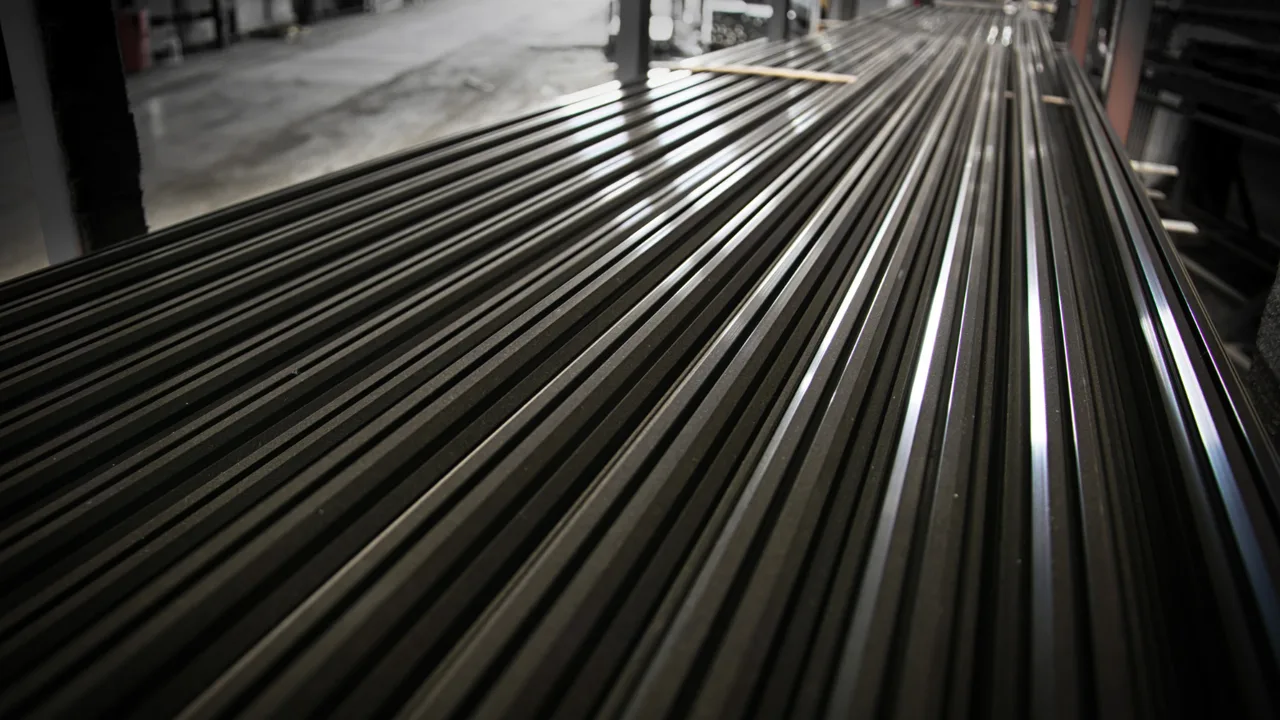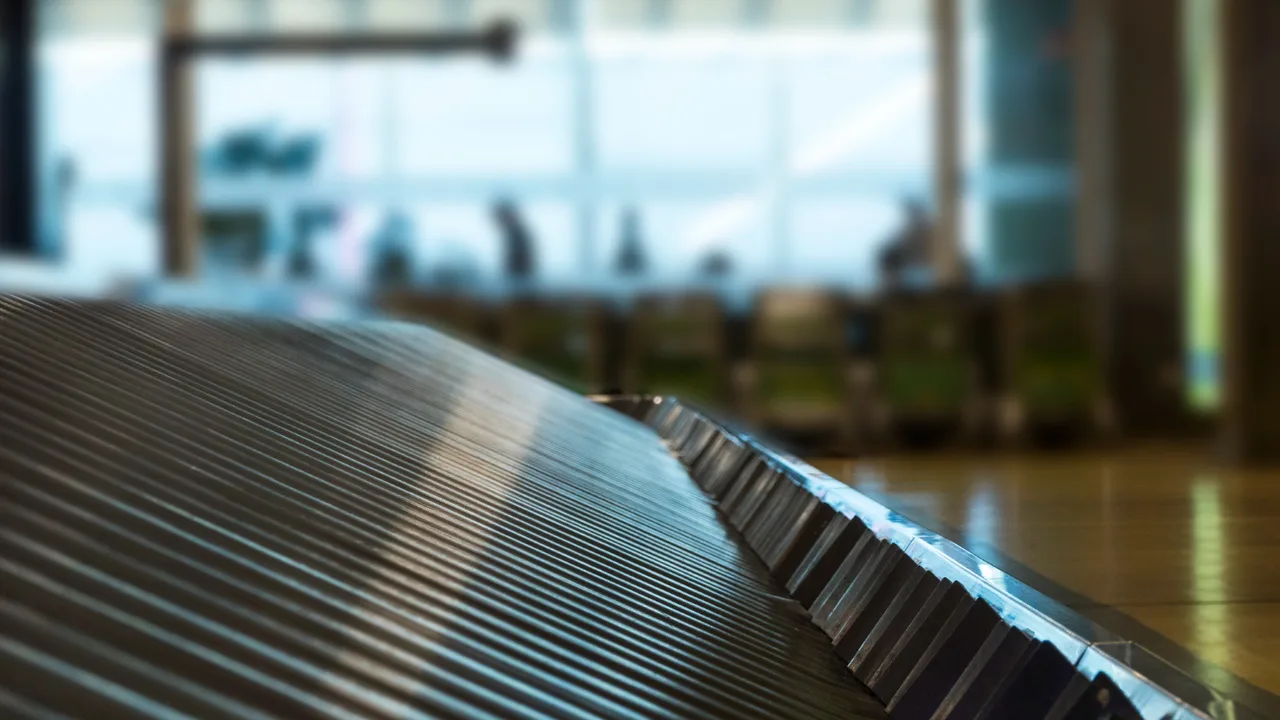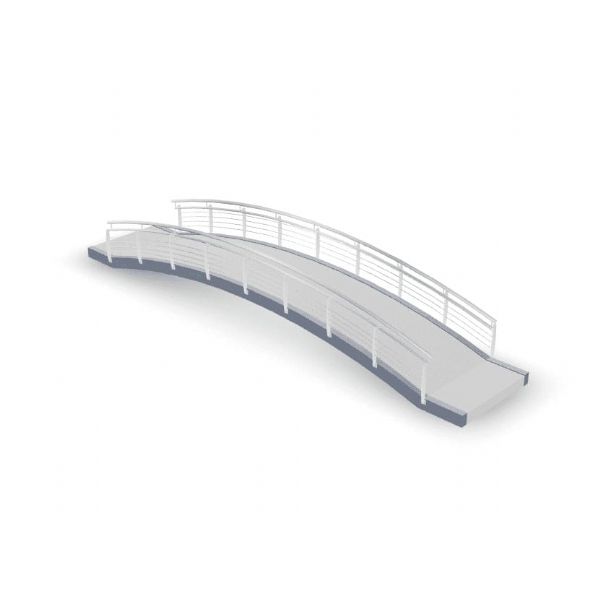SM490A is a Japanese Industrial Standard (JIS G3106) structural steel widely used in heavy construction, bridges, machinery, and industrial frameworks. Recognized for its high strength, weldability, and cost efficiency, SM490A Steel represents one of the most reliable choices for welded steel structures in modern engineering. This article provides a comprehensive overview of its chemical composition, mechanical properties, equivalent grades, and applications in various industries.
Overview of SM490A Steel
What Is SM490A Steel?
SM490A is a hot-rolled structural steel defined under the JIS G3106 standard for rolled steels used in welded structures. It is primarily designed for general construction and bridge frameworks that require a combination of strength and ductility. Within the same category, other grades include SM490B and SM490C, which differ slightly in impact toughness and delivery condition. Among them, SM490A is the most common and economical option.
Standard and Specification
- Standard: JIS G3106 – Rolled Steels for Welded Structure
- Product Forms: plate, sheet, beam, angle, and pipe
- Thickness Range: typically 6 – 100 mm
- Delivery Condition: as-rolled (AR) or normalized (N)
Chemical Composition of SM490A Steel
Typical Composition (%)
| Element | Content (%) |
|---|---|
| Carbon (C) | ≤ 0.18 |
| Silicon (Si) | 0.15 – 0.55 |
| Manganese (Mn) | 1.00 – 1.60 |
| Phosphorus (P) | ≤ 0.035 |
| Sulfur (S) | ≤ 0.035 |
| Optional Elements (Nb, V, Ti) | ≤ 0.03 each |
Influence of Alloying Elements
- Carbon (C): Determines overall strength; kept low for better weldability.
- Manganese (Mn): Improves toughness and tensile strength.
- Silicon (Si): Acts as a deoxidizer, refining the steel microstructure.
- Phosphorus (P) & Sulfur (S): Controlled impurities; excessive levels can cause brittleness.
Comparison with Similar Grades
| Grade | C (%) | Mn (%) | Si (%) | P (%) | S (%) |
|---|---|---|---|---|---|
| SM490A | 0.18 | 1.6 | 0.55 | 0.035 | 0.035 |
| SM400A | 0.20 | 1.4 | 0.50 | 0.035 | 0.035 |
| SM490B | 0.18 | 1.6 | 0.55 | 0.035 | 0.035 |
Mechanical Properties of SM490A Steel

Strength and Ductility
SM490A Steel provides a balanced combination of tensile strength and yield strength suitable for structural applications requiring safety and flexibility. Typical values are:
| Property | Value |
|---|---|
| Yield Strength (≤ 16 mm) | ≥ 325 MPa |
| Tensile Strength | 490 – 610 MPa |
| Elongation | 22 – 26 % |
Impact and Toughness
SM490A exhibits moderate notch toughness and performs well in ambient conditions. For sub-zero environments or seismic structures, designers may select SM490B or SM490C for higher impact performance.
Weldability and Formability
- Excellent weldability due to low carbon content (C ≤ 0.18%).
- Compatible with MIG, TIG, and SMAW processes.
- Recommended preheating temperature: 50 – 150 °C depending on plate thickness.
- Forming operations such as bending and rolling can be done without cracking.
Comparison of Mechanical Properties
| Grade | Yield (MPa) | Tensile (MPa) | Elongation (%) |
|---|---|---|---|
| SM490A | 325 | 490 – 610 | 22 – 26 |
| A572 Gr.50 | 345 | 450 – 620 | 18 – 21 |
| S355JR | 355 | 470 – 630 | 20 – 22 |
Manufacturing Process and Quality Control
Steelmaking and Rolling
SM490A is produced through a controlled steelmaking process that begins with basic-oxygen or electric-arc furnaces. After refining, molten steel is continuously cast into slabs and then hot-rolled to the required plate thickness. Controlled rolling or normalizing treatments ensure a uniform ferrite-pearlite microstructure for high strength and ductility.
Quality Control Tests
- Chemical Analysis: Confirms conformity with JIS G3106 limits.
- Tensile & Impact Tests: Evaluate strength and notch toughness.
- Ultrasonic Inspection: Detects internal discontinuities.
- Mill Test Certificate (MTC): Documents all test results for buyer verification.
Equivalent Grades and Standards
International Equivalents
SM490A Steel corresponds to several international standards used worldwide for structural applications. Although chemical compositions differ slightly, mechanical properties are comparable.
| Region | Standard | Equivalent Grade |
|---|---|---|
| Japan | JIS G3106 | SM490A |
| Europe | EN 10025-2 | S355JR |
| USA | ASTM A572 | Grade 50 |
| China | GB/T 1591 | Q345B |
| Korea | KS D 3515 | SM490A (KS) |
Choosing Between SM490A Steel and Other Grades
Engineers often select SM490A when they require a material that combines moderate cost with strong mechanical reliability. Compared with SM400A, SM490A provides higher yield strength; compared with SM490B/C, it offers better availability and lower cost. However, for cryogenic or seismic zones, the latter may perform better in impact tests.
Applications of SM490A Steel
Industrial and Structural Applications
Due to its high strength-to-weight ratio, SM490A is widely used in various heavy-duty structures, including:
- Bridges and viaducts
- High-rise and industrial buildings
- Storage tanks and pressure supports
- Shipbuilding components and offshore platforms
- Machinery frames and cranes
Civil and Infrastructure Projects
In civil engineering, SM490A plates are often used in welded frames, columns, and roof trusses. Its reliable weldability ensures consistent joint quality, making it ideal for prefabricated construction and modular steel workshops. Many industrial steel structure projects rely on SM490A due to its performance stability and wide availability in Asian and Middle Eastern markets.
Fabrication and Assembly
The material supports both bolted and welded connections. During fabrication, components are typically cut by CNC plasma or laser systems, bent into profiles, and welded using automatic submerged-arc or MIG processes. Post-weld inspection and surface preparation (shot-blasting, priming) are recommended before painting or galvanizing.
Case Example
A 500-ton steel framework for a power-plant facility in Japan used SM490A plates for its primary columns and trusses. The project demonstrated significant savings in fabrication time and achieved excellent dimensional accuracy due to the steel’s predictable behavior during welding and assembly.
Advantages and Limitations
Advantages of SM490A Steel
- High structural strength for medium-to-heavy loads.
- Excellent weldability and formability.
- Economical compared to alloyed high-strength steels.
- Reliable quality control under JIS G3106 standard.
Limitations
- Requires protective coating to prevent corrosion in humid or coastal environments.
- Impact toughness is moderate; not ideal for sub-zero applications without additional treatment.
Corrosion Protection Techniques
To enhance durability, engineers typically apply hot-dip galvanization, epoxy coatings, or zinc-rich primers. For long-span structures, periodic repainting ensures continued performance throughout the lifecycle.
Reference: For deeper metallurgical data on JIS G3106 grades, see the JIS G3106 specification summary.
SM490A in Modern Steel Construction
Integration in Prefabricated and Modular Designs
The demand for efficient construction has driven the adoption of prefabricated and modular steel buildings. SM490A Steel, with its excellent balance of strength, ductility, and weldability, is one of the most preferred materials for such systems. It allows for large components—such as columns, beams, and roof trusses—to be pre-fabricated in workshops, transported, and then assembled on-site with high precision. This method minimizes construction time and ensures better quality control compared to traditional concrete structures.
In projects like industrial warehouses, logistics centers, and factory workshops, SM490A is used extensively for portal frame systems and space trusses. Its uniform mechanical properties ensure predictable performance, even under varying loads and weather conditions. The steel’s adaptability also enables design flexibility for architects who require large clear spans and minimal internal columns.
Performance in High-Rise and Heavy-Duty Applications
SM490A steel is widely used in high-rise buildings, bridges, and offshore platforms. For example, in seismic regions such as Japan and Taiwan, its high ductility helps dissipate energy during earthquakes, reducing the risk of catastrophic failure. In bridge engineering, SM490A is chosen for girders and deck plates where both strength and fatigue resistance are critical. When properly protected with anti-corrosive coatings, it can achieve service lifespans exceeding 50 years.
Adaptability for Hybrid Structures
Another growing trend is the use of hybrid steel-concrete structures. SM490A serves as the primary reinforcement steel in combination with reinforced concrete, delivering improved stiffness and structural integrity. This approach is common in industrial towers, multi-level factories, and power plant structures that demand both compressive and tensile performance from the building frame.
Sustainability and Lifecycle Benefits

Environmental Efficiency of SM490A Steel
One of the major sustainability advantages of SM490A steel lies in its recyclability and low environmental impact. Over 90% of steel produced globally is recycled or reused, and SM490A contributes significantly to reducing carbon emissions associated with new construction. Unlike concrete, which releases large amounts of CO₂ during production, steel’s energy can be recovered through recycling, promoting a more sustainable construction cycle.
Lifecycle Cost and Durability
Although the initial cost of SM490A steel may be slightly higher than mild steel grades, the total lifecycle cost is lower due to its durability, reduced maintenance needs, and faster assembly time. Its compatibility with modular design reduces waste and allows easy disassembly or relocation of structures, further enhancing long-term value.
Energy and Resource Efficiency
SM490A steel is compatible with energy-efficient design approaches, such as integrating solar panels, natural ventilation, and reflective roofing materials. Its precision in fabrication minimizes onsite energy consumption and labor costs. For industrial projects requiring sustainable certification (e.g., LEED or BREEAM), SM490A-based structures help achieve higher sustainability scores due to their recyclability and efficiency in use.
How to Source and Select SM490A Steel
Key Selection Criteria
When choosing SM490A for construction or fabrication, several technical and commercial factors must be evaluated:
- Thickness and size range: Determine based on structural design requirements and load capacity.
- Manufacturing process: Choose plates from mills offering controlled rolling or normalization for consistent performance.
- Material certificates: Always request a Mill Test Certificate (MTC) confirming compliance with JIS G3106 specifications.
- Surface condition: Opt for shot-blasted and primed plates to prevent early corrosion.
Supplier Evaluation
A reliable supplier must ensure quality consistency, testing transparency, and timely delivery. Suppliers with ISO 9001 and CE certification provide additional assurance. It’s also critical to evaluate whether they perform ultrasonic inspection and chemical verification before dispatch. For international projects, logistics support and export experience are essential for seamless delivery.
Trusted Industrial Supplier Example
XTD Steel Structure as Steel Structure Factory is one of the professional providers of industrial steel structures, pre-engineered warehouses, and custom fabrication using SM490A and other high-performance grades. With expertise in international projects across Asia, the Middle East, and Africa, XTD ensures high-quality steel fabrication and modular design integration that meet global standards like JIS, ASTM, and EN.
Technical Data Summary
SM490A Chemical & Mechanical Summary
| Property | Unit | Value / Range |
|---|---|---|
| Yield Strength (≤16mm) | MPa | ≥325 |
| Tensile Strength | MPa | 490–610 |
| Elongation | % | 22–26 |
| Impact Value (20°C) | J | 27 min |
| Density | kg/m³ | 7,850 |
| Modulus of Elasticity | GPa | 200 |
| Thermal Conductivity | W/m·K | 54 |
| Poisson’s Ratio | – | 0.29 |
Dimensional and Surface Tolerances
SM490A plates follow the dimensional tolerances defined in JIS G3193:
- Thickness tolerance: ±0.3 to ±0.6 mm (depending on thickness)
- Width tolerance: ±2% of nominal size
- Flatness: ≤5 mm per meter
Surface finishing may include pickled and oiled, black hot rolled, or shot-blasted and primed according to project requirements.
Recommended Welding Consumables
- Shielded Metal Arc Welding (SMAW): E4916, E5016, or equivalent
- Gas Metal Arc Welding (GMAW): ER50-6 or ER70S-6
- Flux-Cored Arc Welding (FCAW): E71T-1
Practical Considerations in Fabrication
Cutting and Machining
SM490A can be processed using plasma, oxy-fuel, or laser cutting. For thick plates, preheating prevents cracking and reduces thermal stress. The steel’s machinability is moderate, and carbide tools are preferred for high-speed drilling or milling operations.
Heat Treatment and Stress Relief
Heat treatment may not be necessary for general construction applications. However, after heavy welding, stress-relief annealing (550–650°C) can be performed to reduce residual stress and prevent distortion. The steel’s ferrite-pearlite structure responds well to controlled cooling, maintaining uniform strength across welded zones.
Inspection and Testing Protocols
Comprehensive testing ensures compliance with design codes:
- Visual inspection for surface defects and alignment
- Ultrasonic testing (UT) for internal integrity
- Magnetic particle testing (MT) for weld zones
- Mechanical tensile and impact testing as per JIS Z2241 and Z2242
SM490A in Global Engineering Projects
Bridge and Transportation Infrastructure
SM490A is a trusted steel for highway bridges, metro stations, and overpasses. Its consistent quality ensures reliable weld joints even under cyclic traffic loads. Many Asian transport projects use SM490A girders for spans exceeding 40 meters due to its stable yield behavior and reduced weld cracking tendency.
Energy and Industrial Facilities
In energy projects, SM490A Steel is employed in power plants, LNG terminals, and transmission towers. Its mechanical performance under vibration and heat cycles makes it suitable for dynamic environments. When paired with protective coatings, SM490A demonstrates long-term stability in coastal and desert conditions.
Case Study: Industrial Warehouse in Southeast Asia
A logistics facility in Southeast Asia adopted SM490A steel for a 10,000 m² warehouse structure. By using prefabricated SM490A frames, the erection time was cut by 35%, and total costs were reduced by 18% compared to reinforced concrete. The structure achieved excellent thermal performance and low maintenance due to epoxy-coated SM490A steel beams and columns.
Conclusion
SM490A steel stands out as one of the most versatile and cost-effective materials in the realm of structural engineering. Governed by the JIS G3106 standard, it offers a dependable balance of mechanical strength, ductility, and weldability suitable for a wide range of industrial, commercial, and infrastructure applications. Its adaptability to prefabrication, sustainability benefits, and compatibility with modern construction technologies make it a cornerstone of contemporary steel structures.
Whether used in bridges, high-rise buildings, or modular industrial workshops, SM490A Steel ensures long service life and predictable performance. When sourced from certified manufacturers like XTD Steel Structure, it provides not only material reliability but also the engineering support needed for global-scale projects.
Final Note: For engineers, fabricators, and contractors, selecting SM490A means investing in quality, sustainability, and structural safety — three pillars that define the future of modern steel construction.






